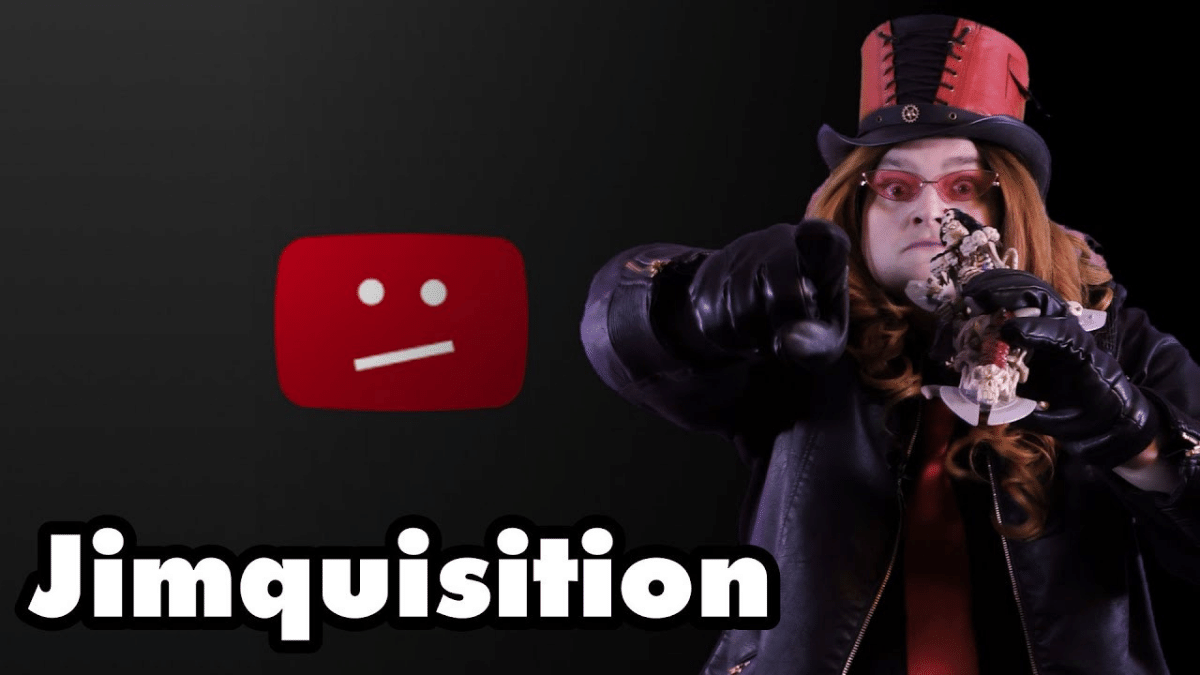Gaming YouTuber Targeted by Strategic DMCA Notices

Most YouTubers know that, if you get three copyright strikes, your account (and all the channels under it) are subject to termination. So what happens with a DMCA filer strategically tries to turn one copyright strike into three?
That was exactly what happened to James Stephanie Sterling. Sterling is a YouTuber and video game critic that is best known for their Jimquisition series that does lengthy and comedic teardowns of the worst practices of the video game industry.
However, it was their video game reviews that drew the latest round of attention. Last week, they published a review of Taishogun Rise Of Emperor, mocking the game’s many technical and gameplay issues.
Unfortunately for Sterling, it appears that the game’s developer, Gilson B. Pontes, took exception to the review and filed a Digital Millennium Copyright Act (DMCA) takedown notice on a review Sterling published for a different game a year before.
The next day, a batch of three DMCA takedowns were filed against other reviews Sterling had done.
Then, shortly after that, Pontes filed yet another DMCA takedown, officially hitting Sterling’s channel with a third copyright strike.
Unfortunately for Pontes, this was not Sterling’s first run-in with those attempting to use copyright to get rid of his channel. In 2014, they were targeted by the video game studio Digital Homicide, who filed DMCA takedowns targeting negative reviews by Sterling. The case eventually spilled into a defamation lawsuit filed by Digital Homicide that was won by Sterling.
According to Sterling, he quickly contacted his attorney and, after threatening both Pontes and YouTube with legal action, got the videos restored.
The matter is resolved for the moment though, in his video about the battle, Sterling said that they may consider additional legal action in the case. The only issue for them is if it is worth the expense and stress it would likely require.
However, the story leaves an uncomfortable question: What’s to stop others from breaking apart a single copyright notice into multiple to get a stronger response from YouTube (or any other host). Also, what can YouTube do to prevent filers from gaming the system in this way?
Turning One Strike into Three

Setting aside the issue of validity of the DMCA notices, there’s a very simple question that needs to be asked: Why did Pontes file three separate notices instead of one?
Though it’s technically possible that Pontes simply discovered the videos in three different batches and filed three separate notices, that beggars belief. Not only have most of the videos been up for years, but the first filing came just days after a critical review of another one of Pontes’ games.
Instead, it’s much more likely that Pontes deliberately broke apart the DMCA notices in a bid to try and generate three copyright strikes against Sterling’s channel and get it taken down. If Pontes had simply combined all the alleged infringements into one notice, it would have meant less work for him and for YouTube but would have only produced one strike.
Almost certainly, the goal of this was to try and get Sterling’s channel removed by filing DMCA notices tactically to do it.
That, however, seems grotesquely unfair. If Sterling’s channel wouldn’t have been removed for five separate videos being accused of copyright infringement, why would it be removed for five videos broken apart into three notices? The reason is because YouTube’s system is fundamentally broken.
Counting the Strikes
Under the DMCA, YouTube has an obligation to suspend or terminate the accounts of “repeat infringers”. However, the definition of a repeat infringer is nowhere to be found on the law and that’s left hosts to come up with their own.
YouTube has settled upon a copyright strike system. There, each DMCA notice constitutes a strike and, once you accumulate three within a certain timeframe, your account may be shuttered and all your channels and videos removed.
But hinging the strike process on DMCA notices doesn’t make much sense. There is no limit to the number of URLs that a DMCA notice can contain. If I file three notices against a channel, each with one video, that would produce three strikes and possibly kill the channel. However, if I file one notice with five videos, the channel will likely just get a warning.
Determining whether someone is a repeat infringer or not is much more complicated than just looking at the number of DMCA notices they have been targeted by. One notice could very clearly indicate a pattern of repeat infringement while multiple notices could represent just a tiny percentage of the channel’s videos and not a pattern of infringement.
As long as YouTube keeps this system in place, it’s going to be easily exploitable. This includes both by legitimate rightsholders with serious grievances and those, like Pontes, who are making much more questionable uses of the system.
Building a Better System
The major problem here is that YouTube is working as hard as it can to be completely hands off with its copyright policies. That means the system is going to be heavily automated and, when something is heavily automated, the outcomes are governed by an algorithm.
Any algorithm can be gamed. All one must do is find easily tweaked variables that have an oversized impact on the outcome and modify those. However, the key variable in the YouTube Copyright Strike system, the number of takedowns, is both widely known and easily gamed.
The first step is to make that more difficult to game. One good step would be to make it so that rapid-fire DMCA notices from the same rightsholder count as a single strike. As long as the DMCA notices are from the same person, do not target videos uploaded since the first notice and are within the time frame for resolving the first notice, they should count as one strike.
However, this begs a simple question: Why are the number of takedown notices a factor at all? Other variables, such as number of videos involved, the severity of the alleged infringements, the nature of the channel itself and more have a much greater bearing.
To be clear, YouTube does look at these things behind the scenes and will often remove channels that see even a single notice if there are a large number of videos listed in it. However, those typically are dealing with very spammy and scammy YouTube channels and it’s not really applicable to YouTubers like Sterling.
Instead, for YouTubers like Sterling, YouTube wanted to create a simple and easy-to-understand copyright system. While they succeed, that simplicity also makes it easy to game.
For YouTube, they need to find ways to maintain as much of that simplicity as possible but add protections that make it harder to game the system. The above suggestion for how to count notices is one, but there are many other things that YouTube can and should do including counting videos, not notices, not counting small infringements as copyright strikes and so forth.
Ultimately, a three strikes system may need to give way to a points system, similar to what one has with their drivers license, where infractions accrue points, not strikes. Small infractions earn small points, larger infractions earn big points and, once a channel reaches a certain threshold, then the repeat infringer clause is activated.
More complicated, yes. However, it’s still easy to understand and less like likely to be gamed. It can also help improve transparency by forcing YouTube to explain WHY certain infractions were worth X number of points.
It’s an idea that’s not likely to be implemented, but it is one that could prevent situations like Sterling’s.
Bottom Line
If you find yourself in a situation like Sterling, it’s important to look at the notice(s) that have been filed and, if you truly feel that they are false notices, file a counternotice quickly. Please understand the serious risks involved in that, including the possibility of being sued, but it is the best recourse for truly false notices.
However, if you do that, it may not completely protect you. Still, it at least puts YouTube on notice that something is awry, and the standard course of action isn’t appropriate.
That said, an overhaul of YouTube’s copyright system has long been overdue. As it is written, it makes it too easy to get legitimate accounts shuttered and too difficult to close the accounts of actual pirates. for those that sit outside the walls of Content ID, the system serves absolutely no one.
However, YouTube isn’t likely to put much time or energy into fixing this. They are proud that 98% of their copyright disputes are handled automatically through Content ID and aren’t likely to invest much into fixing the remaining 2%.
As long as that’s the case, stories like Sterling’s will be increasingly common as the current system practically invites gaming.
Original Video
Want to Reuse or Republish this Content?
If you want to feature this article in your site, classroom or elsewhere, just let us know! We usually grant permission within 24 hours.
